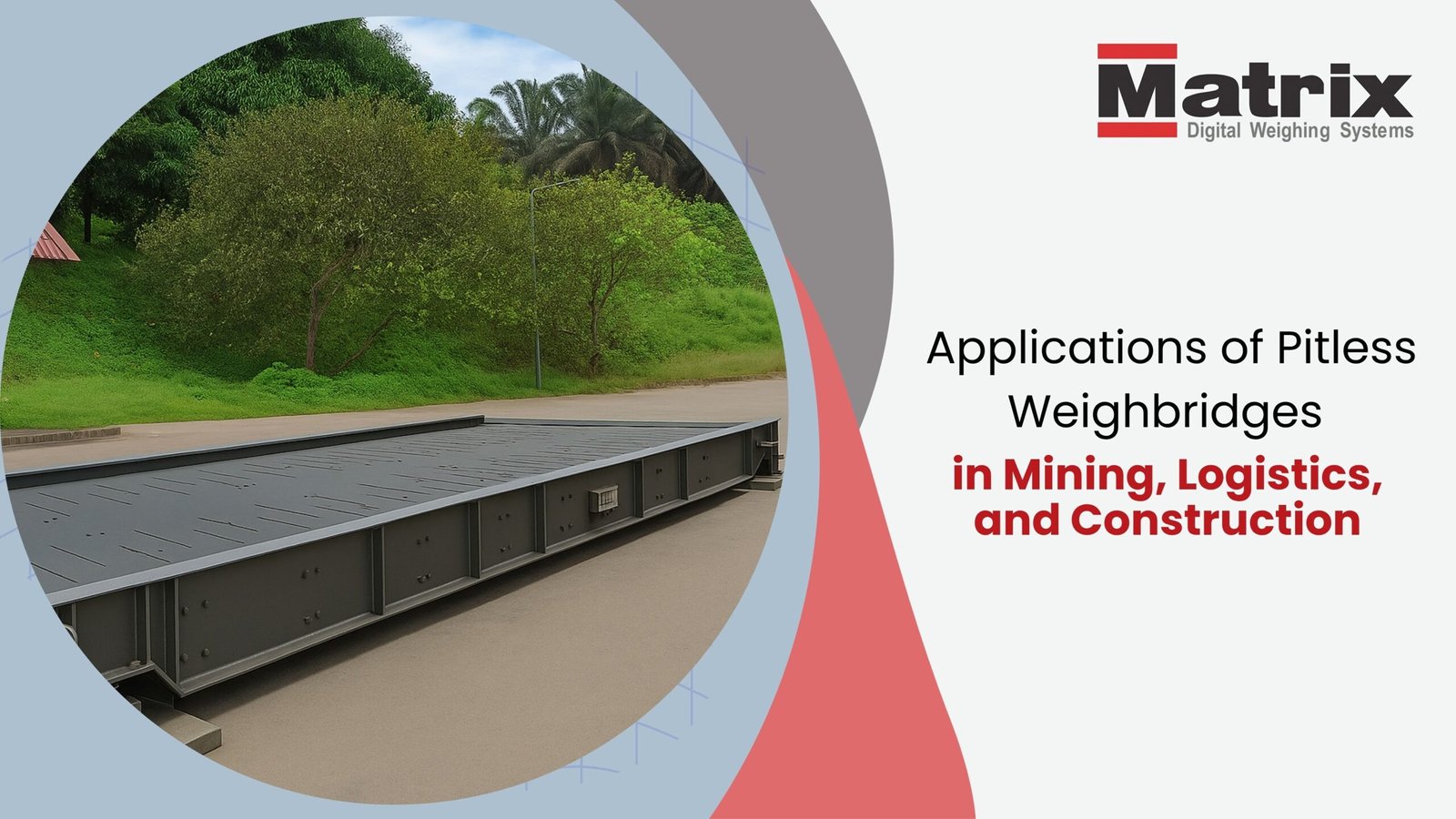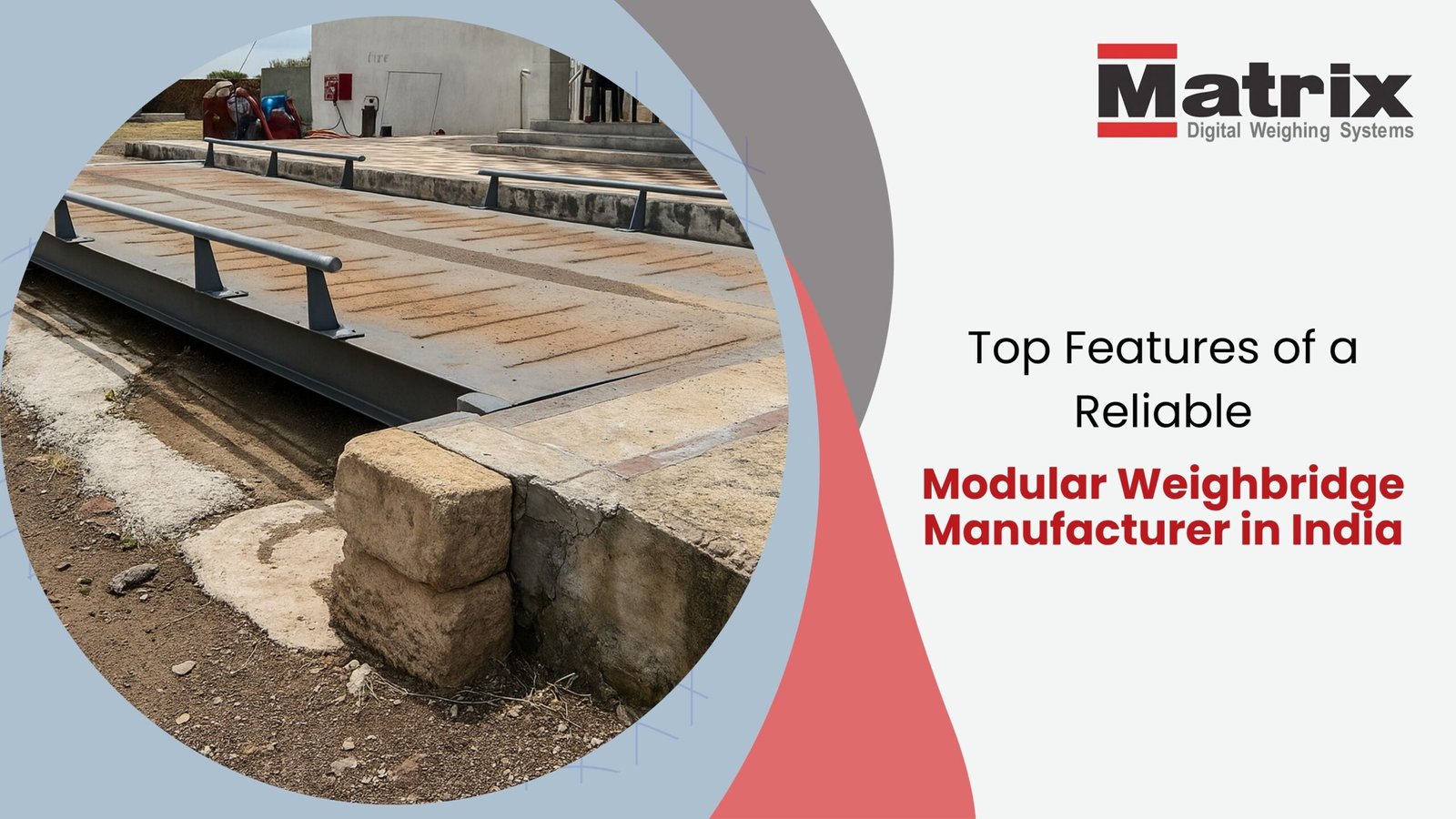Applications of Pitless Weighbridges in Mining, Logistics, and Construction

Introduction
Most weighing projects fail in the details: slow civil work, waterlogged pits, and truck queues that never end. Pitless (surface-mounted) weighbridges solve a big part of that—fast installs, easier access, and fewer monsoon surprises. If you run a mine, a warehouse network, or a project site, your scale must start on time, stay accurate, and never block the yard.
This advertorial gives you a clear, India-first take on pitless applications. We’ll explain what “pitless” really means, show where it fits in mining, logistics, and construction, and spell out planning steps that protect uptime. We’ll close with simple decision cues you can use with your civil contractor and site team. The goal: choose a format that keeps trucks moving on your worst weather day—not just on paper.
What is a pitless weighbridge
A pitless weighbridge sits above ground on an RCC slab with ramps on one or both sides. No excavation, no underground chamber. Load cells, junction boxes, and cables are reachable at deck level. Installers complete RCC work, place the deck, align, calibrate, and hand over. Traffic runs in a straight line: up the ramp, onto the deck, and out.
Plain advantages
- Minimal digging and faster curing windows
- Clean access for service and calibration
- Lower water-ingress risk during monsoon
- Easier to relocate when projects shift
Core benefits that matter
These are the levers that change outcomes on Indian sites.
- Speed to go-live: Surface slab + ramps beat deep pits on timeline. This protects commissioning dates tied to production or dispatch plans.
- Uptime in rain: With no cavity to flood, operations resume quickly after cloudbursts.
- Service safety: Technicians work at ground level—no confined-space entry, better visibility, faster MTTR.
- Relocatability: Mining benches shift; project sites move. A pitless deck can go with you.
- Cost clarity: Civil scope stays predictable—no surprises from seepage, shoring, or waterproofing.
Mining applications
Open-cast mines, quarries, and mineral yards push scales to the limit. Loads are heavy, wheels are muddy, and roads are uneven.
Where pitless fits
- Face-adjacent weighing: Deploy a pitless unit near the active face to shorten haul cycles and confirm payload.
- Satellite stockpiles: Verify inbound ore/aggregate before blending; catch overloads before they damage internal roads.
- Seasonal benches: Move the bridge when the bench migrates or a lease block opens.
Practical notes
- Plan longer approach ramps for articulated dumpers and high-GVW tippers.
- Use anti-skid surfaces and wheel guides; keep mud off the ramps with a simple wash pad.
- Schedule calibration after major realignments or slab repairs.
Logistics applications
Distribution centres, ports, ICDs, and highway yards care about turn time, compliance, and audit trails.
Where pitless fits
- Inbound/outbound gatehouses: Weigh at the fence line to keep the yard clean and queues outside.
- Multi-shift operations: Fast access helps during peak hour truck waves.
- Fleet standardisation: One surface-mounted design replicated across sites keeps training and maintenance uniform.
Practical notes
- Stripe centre lines, add bollards on ramp edges, and mark stop points for consistent axle placement.
- Design queue lanes for the longest semi-trailers you handle; keep radius clear for night turns.
- Integrate ticketing, ANPR, RFID, and audit logs for clean compliance.
Construction applications
Project sites live on deadlines, changing layouts, and leased land. Nothing is permanent—except the need to control material flow.
Where pitless fits
- Temporary batching yards: Track sand, aggregate, cement, and steel movement with quick setup and easy teardown.
- Linear projects: For highways, metros, and pipelines, move the scale with the site camp.
- Brownfield expansions: Avoid deep digging near existing utilities; stay above ground and on schedule.
Practical notes
- Choose gradients that work with fully loaded transit mixers and tractor-trolleys.
- Protect ramps with rubber stops and reflectors for night pours.
- Keep a spare load cell and junction card on site during peak pour windows.
Installation and site planning
Get these five items right and the bridge will earn its keep.
1) Yard geometry
Map entry/exit, turning radii, and waiting bays. For pitless, allow straight approaches and safe merge back into flow.
2) Slab and sub-base
Check soil bearing capacity. Use a compacted sub-base, reinforcement as per load class, and proper curing. An uneven slab means drift in calibration.
3) Ramps and gradients
Set ramp length for your heaviest wheelbase. Keep gradients gentle so low-clearance trailers do not scrape. Use anti-skid finish.
4) Drainage discipline
Slope the slab to drains. Direct stormwater away from the deck. A dry deck is an accurate deck.
5) Utilities and safety
Mark underground cables/pipes before RCC work. Add lighting, wheel guides, and side bollards. Paint lines and re-paint on a schedule.
Maintenance and uptime
Pitless does not remove maintenance. It makes it faster and safer.
- Routine cleaning: Keep ramps free of mud, spillage, and oil.
- Calibration cadence: Align with usage intensity and regulation; re-check after any civil repair.
- Visual inspections: Look for loose anchor bolts, worn end-stops, and damaged cable conduits.
- Spare strategy: Stock at least one compatible load cell and a junction box card for instant swap-outs.
Safety, compliance, and decision cues
Accurate weights protect roads, equipment, and people. They also keep paperwork clean.
Safety and compliance basics
- Wheel guides prevent fall-offs; bollards protect edges.
- Clearly marked stop lines reduce driver error.
- Integrated indicators and printers create a traceable audit trail for regulators and customers.
- Overload control reduces tyre failures, brake stress, and structural damage.
Decision cues for pitless
- High water table or flood-prone yard
- Tight commissioning timeline with penalties for delay
- Temporary or leasehold location
- Sufficient approach space for ramps and queues
FAQs (quick answers)
Q: How much space do ramps need?
A: Plan for gentle gradients that work with your longest wheelbase. Add extra length for safe braking in rain. Your civil vendor can compute exact numbers from axle spacing.
Q: Is pitless accurate enough for off-road trucks?
A: Yes. Accuracy depends on load cell quality, deck alignment, slab level, and calibration—not the presence of a pit.
Q: Can we relocate the scale later?
A: That is a core advantage. You’ll unbolt, lift, repour a surface slab at the new site, and recommission.
Q: What slows operations most in rain?
A: Debris and slick ramps. Keep surfaces clean, repaint anti-skid, and direct runoff away from the deck.
Q: What about axle weighing?
A: If you enforce axle limits, mark stop points and integrate software that records axle-wise data along with gross weight.
Conclusion (action step)
Pitless weighbridges help you start fast, run clean in the monsoon, and adapt when sites change. In mining, they shorten haul cycles. In logistics, they speed gates with clean audit trails. In construction, they move with the project. If you have space for ramps and want fewer civil risks, pitless is the practical choice. Sketch your yard, check soil, fix drainage, and you’re ready to commission.
Matrix Weighing Systems — Built for Indian Sites
We design and install pitless weighbridges for mines, warehouses, ports, and project camps across India. Our team supports RCC drawings, ramp geometry, calibration plans, and integrations for ticketing and audit trails. We focus on clean installs, accurate readings, and fast field support—so your yard keeps moving.
Call to action: Book a 20-minute site-readiness consult. Get a costed pitless layout tailored to your yard, truck mix, and timeline.

